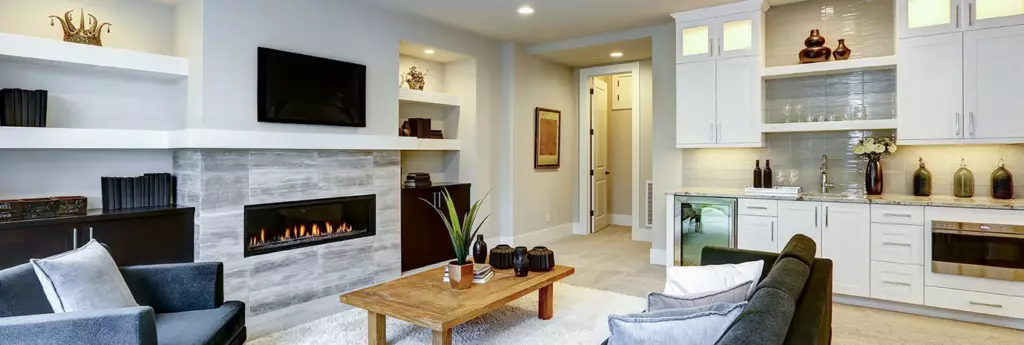Everything You Need to Know About Fireplace Insert Safety
Anytime the word ‘fire’ enters a conversation, the word ‘safety’ is not far behind. And with good reason, especially in California, where residents have had to grapple with an ever-expanding fire season. Plus, there’s the effect that all that smoke is having on our environment.
Many Bay Area homeowners may be looking at their fireplace a bit differently these days.
While every fireplace will require care to ensure it is operating safely and efficiently, fireplace inserts are an incredibly popular option due to their safety, heating efficiency, energy savings, and eco-friendly benefits.
In this article, you’ll learn about the three most common types of fireplace inserts, the benefits they provide, as well as their safety features.
Types of Fireplace Inserts
Fireplaces inserts vary by fuel and design. The most common types of inserts are:
Wood Burning: A wood-burning insert increases the efficiency and safety of the traditional firebox it’s placed within, while still requiring wood as the fuel source.
Pellet: Converting a traditional fireplace to pellets essentially turns your fireplace into a pellet stove.
Gas: The most versatile type of insert runs on gas. With gas, the design options increase, as does the efficiency.
To learn more about each type of fireplace insert and find the best one for your home, read Gas, wood, or pellets: Which fireplace insert is right for me?
Fireplace Insert Safety vs. Traditional Fireplaces
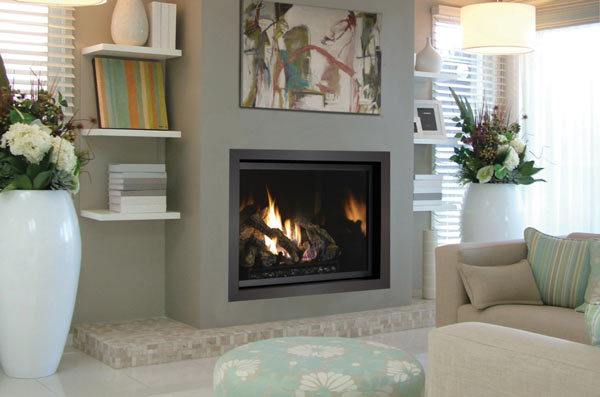
Compared to a traditional wood-burning fireplace, pellet, wood, and gas fireplace inserts are all safer options due to their incredibly efficient design. Inserts have a fully contained system that prevents harmful fumes like carbon monoxide and smoke from entering your home. All fireplace inserts are also designed to ensure no sparks or embers can ever escape, greatly reducing the risk of an accidental fire.
Additionally, if not cleaned regularly, a traditional wood-burning fireplace will create a buildup of creosote, which is a huge fire hazard. Fireplace inserts that burn wood or pellets do not produce any creosote. Similarly, gas fireplace inserts burn zero physical material, creating an incredibly clean burn with much fewer emissions as well.
Not only are professionally installed fireplace inserts safer than traditional wood-burning fireplaces, they are also much more heating efficient, economical, and easier to use and clean. To learn more about the many benefits of each type of fireplace insert, read our recent article on inserts vs fireplaces.
Overall, fireplace inserts are an incredibly safe option for any home and the planet. Let’s look at them, one at a time.
Safety of Wood Burning Fireplace Inserts
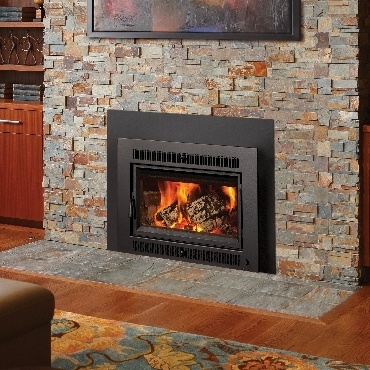
Wood inserts burn more efficiently, which increases the heat output and reduces the volume of smoke and carbon they emit. In addition, because they are more self-contained, the risk of embers escaping into the room is greatly reduced. Some wood-burning fireplace inserts even come with electric igniters, which further reduce fire danger, because there are no matches needed.
Safety of Pellet Burning Fireplace Inserts
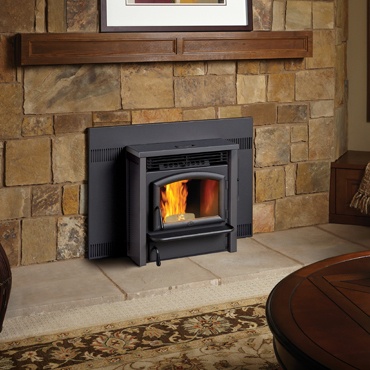
Pellet-burning fireplace inserts produce fewer harmful emissions than traditional wood-burning fireplaces. In addition, all of its functions are electronically controlled for a cleaner burn. Equipped with electronic sensors, ignitor, and controls, the air-to-fuel ratio remains controlled for a clean, safe burn.
And there’s no loss of fuel at start-up. A simple flick of a switch. No matches, no smoke, no embers. No fire danger.
Safety of Gas Fireplace Inserts
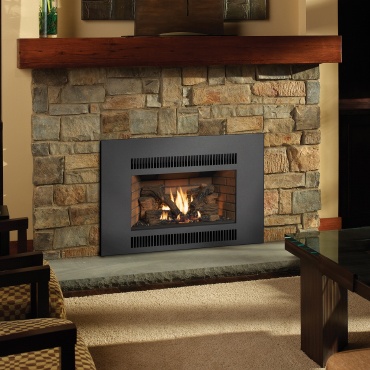
If you are sensitive to the smell of smoke but enjoy the cozy warmth and ambiance of a fire a gas fireplace insert is perfect for your home. They start at the flick of a switch. No smoke, no embers, and no chimney fires that can lead to house fires. In fact, they don’t need that brick-and-mortar chimney at all. You can have them installed anywhere. Even on an interior wall.
Since no physical material is burning, gas inserts are one of the safest options for homes with small children or pets. They are also the only type of fire insert that is not subject to no-burn days. Also, like the wood-burning model, they don’t require electricity to operate, so you’ll still have heat during a power outage.
Design The Perfect Fireplace Insert for Your Home with Our Fireplace Builder App
Fireplace insert safety relies heavily on a professional installation. A poorly installed unit can lead to harmful toxins escaping into your room, increased risk of a house fire, and damage to the unit and surrounding enclosure.
If you’re ready to make the switch to a fireplace insert, whether gas, wood, or pellet, use our Fireplace Builder to design your own dream fireplace insert! If you have questions about the process, contact our team at Creative Energy for a free in-home consultation today.

